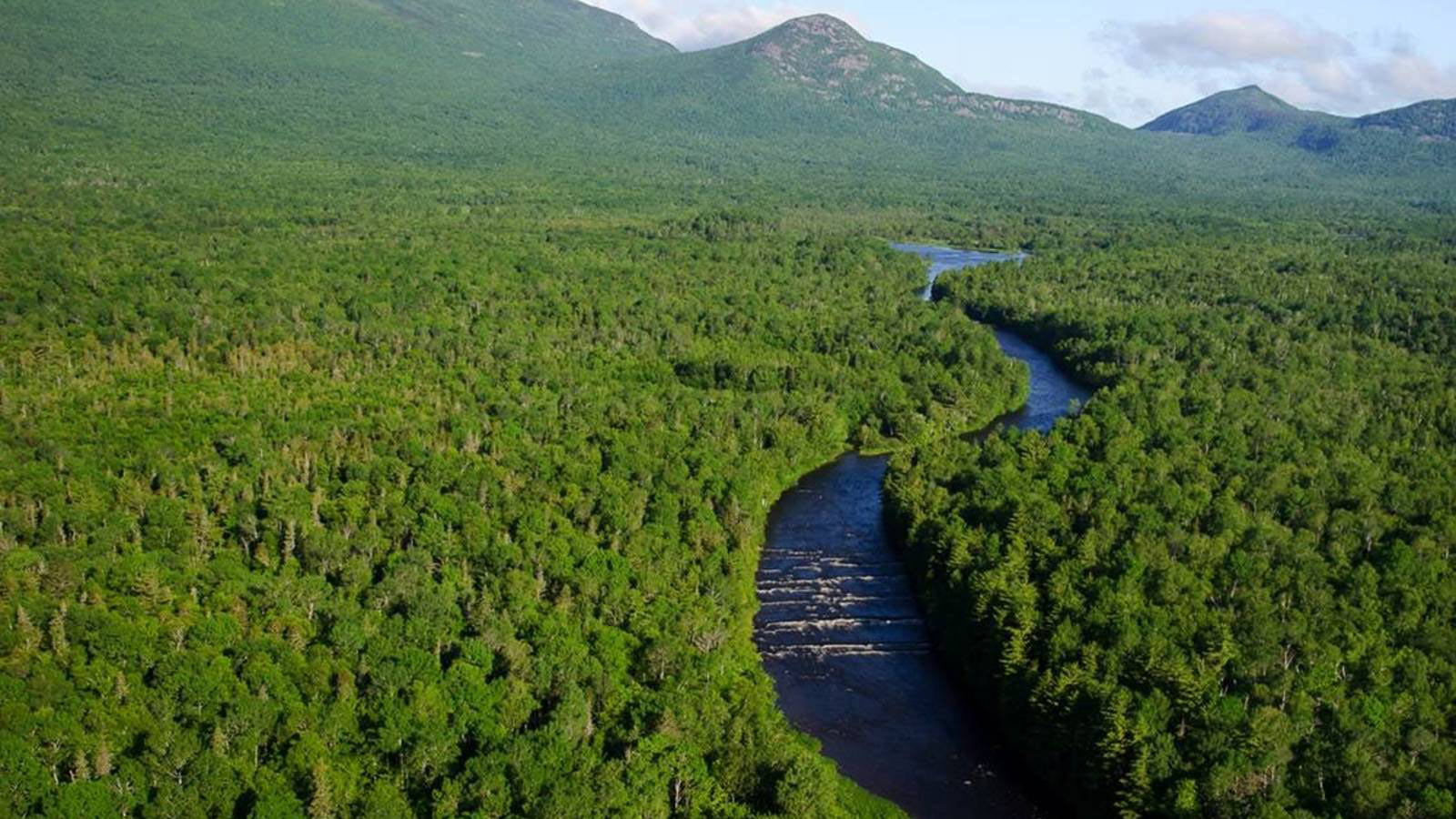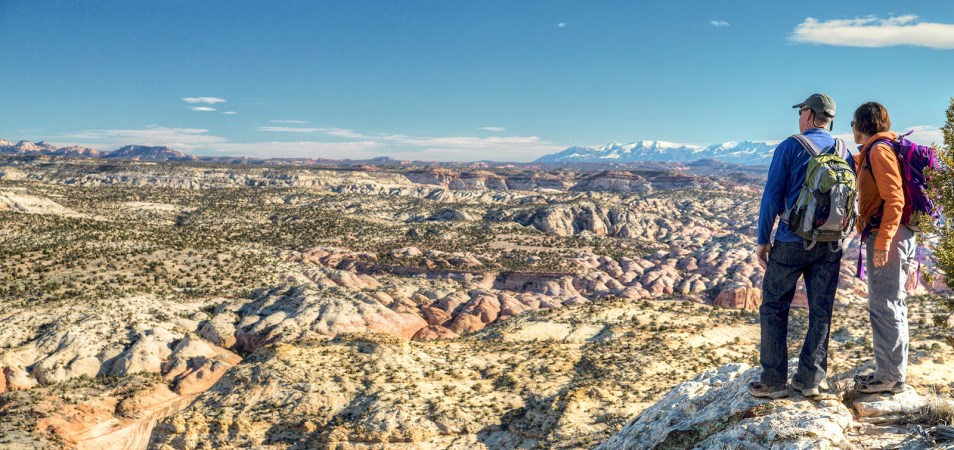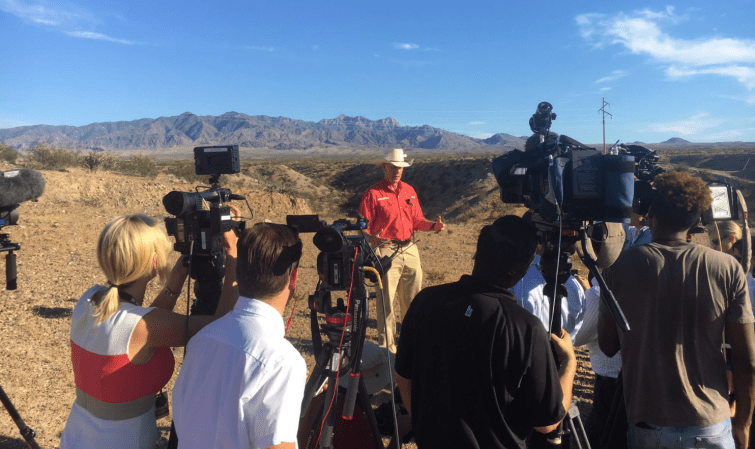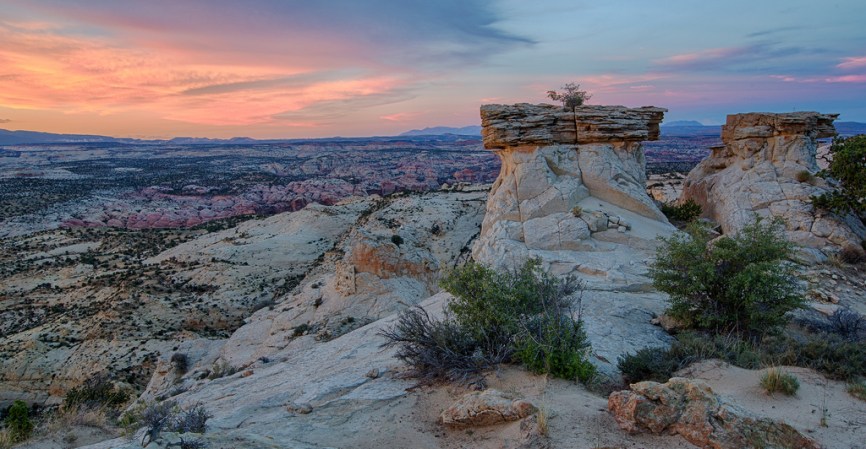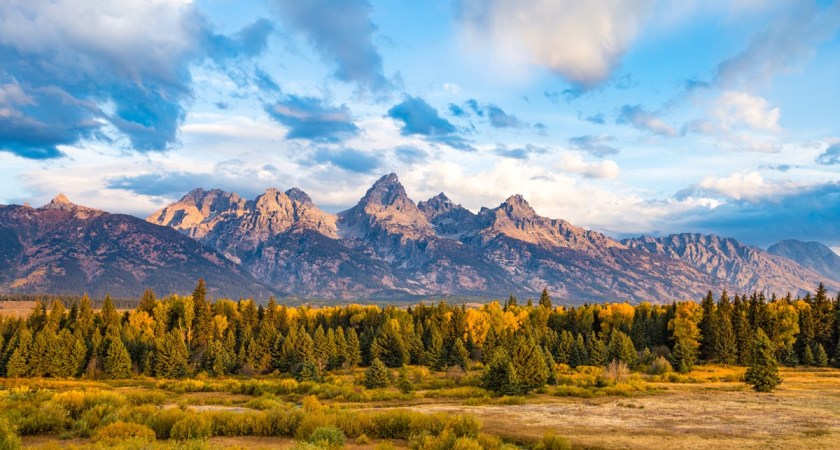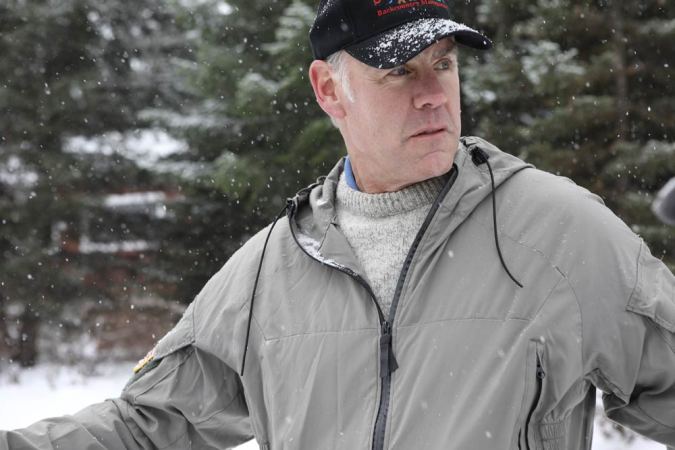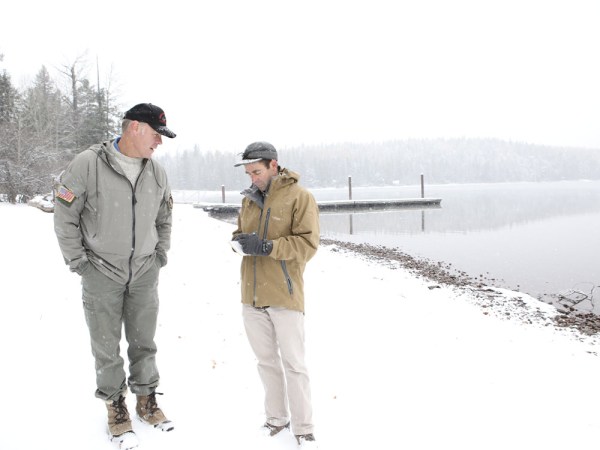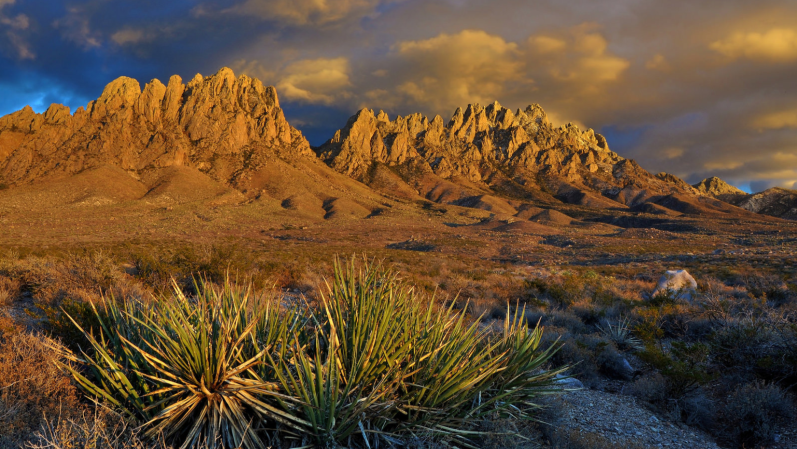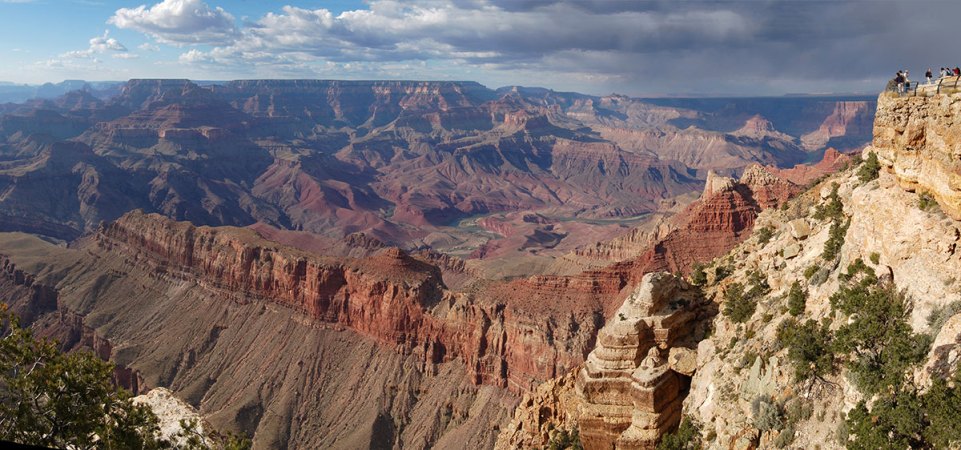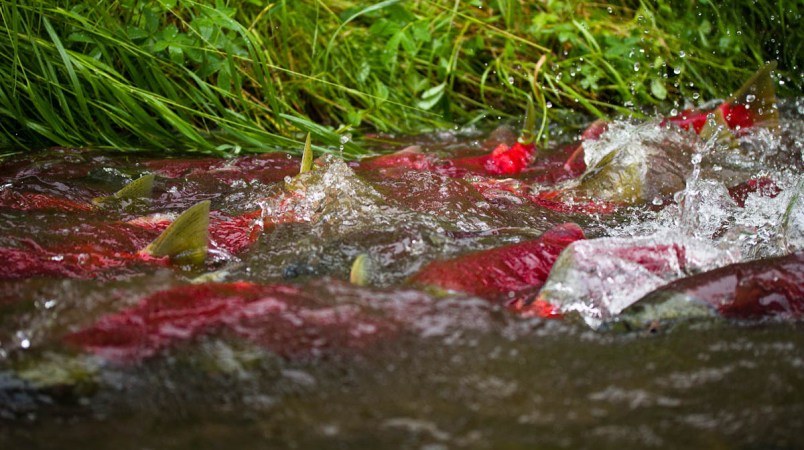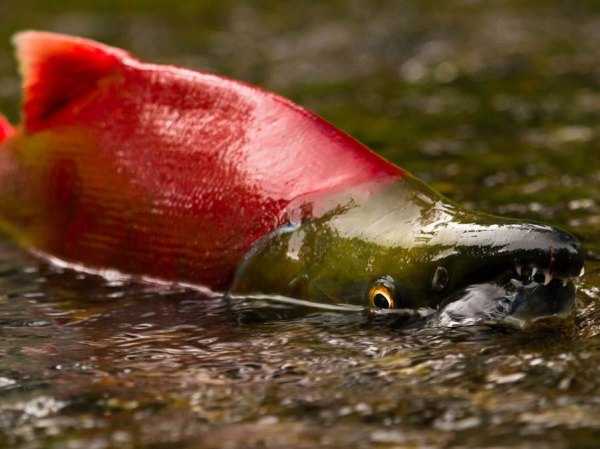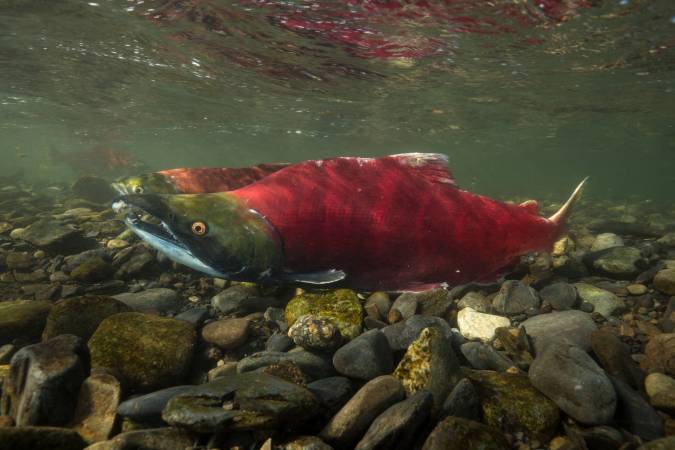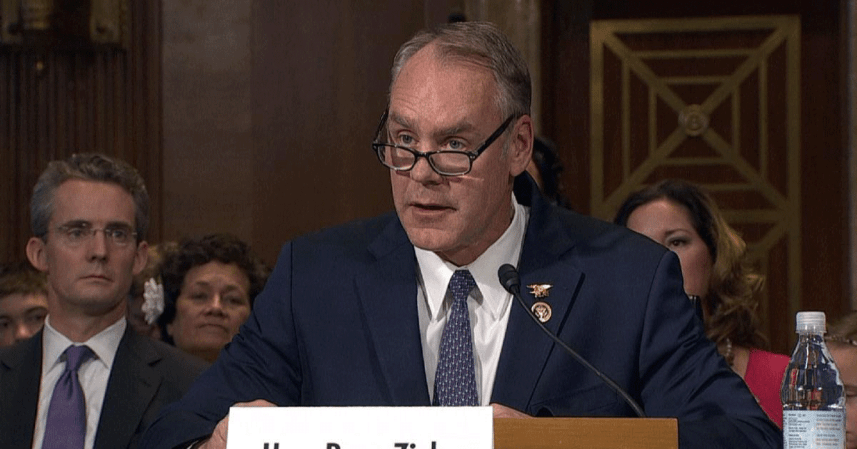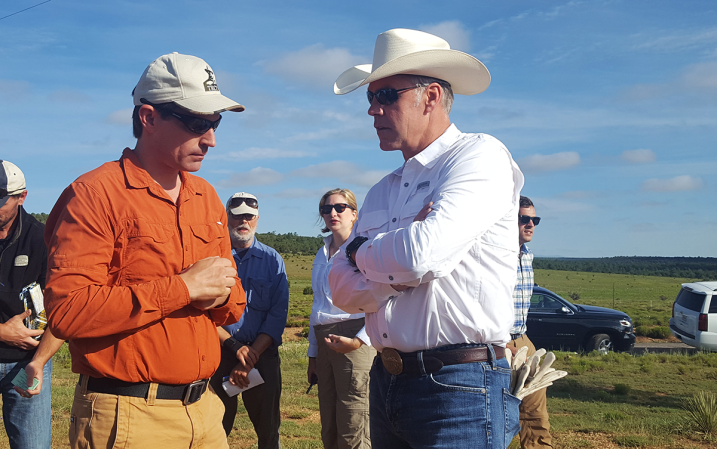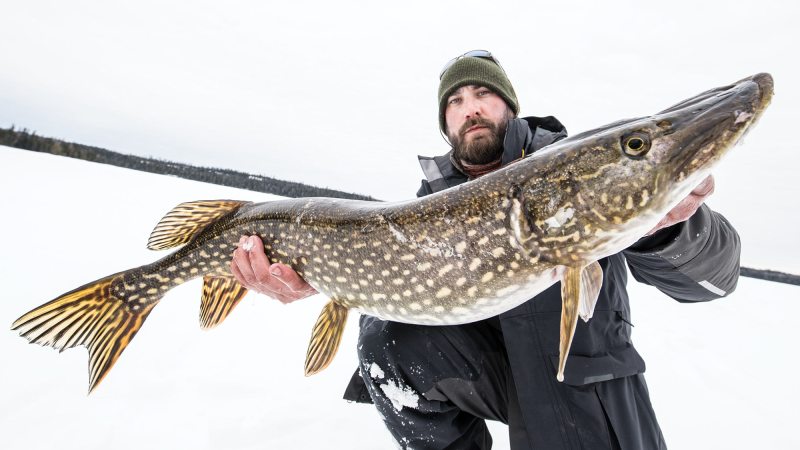TOP STORY: Zinke Targets 8 More National Monuments For Trump Trimming
President Donald Trump’s Dec. 4 proclamations that reduced the sizes of protected areas within Grand Staircase-Escalante and Bears Ears national monuments in southern Utah will likely be followed by similar scale-downs in as many as eight other national monuments in 2018.
The eight were identified as candidates to be rescinded or resized in an Interior Department audit of the nation’s 27 monuments ordered by Trump in April. Interior Secretary Ryan Zinke issued the recommendations in a Dec. 5 memorandum to the White House. Monuments created by President Barack Obama were specifically targeted. They are:
Cascade-Siskiyou National Monument: Zinke did not specify how much land could be removed from the 86,774-acre national monument but recommends more areas be opened for timber harvesting. Zinke also noted that privately owned lands are inside the monument that straddles the California-Oregon state line.
Gold Butte National Monument: Zinke also does not specify how much land could be removed from the nearly 300,000-acre national monument in southeastern Nevada, but notes the area’s protected status conflicts with the city of Mesquite’s water rights.
Pacific Remote Islands and Rose Atoll national monuments: Zinke recommends boundary changes to these two marine national monuments, which collectively, span more than 322 million acres. The boundary change could encourage more commercial fishing.
Katahdin Woods and Waters: An 87,500-acre monument in Maine created by Obama in 2016 should be reopened to timber harvesting.
Northeast Canyons and Seamounts: Another monument created by Obama in 2016, this 3.1 million-acre marine monument off Cape Cod, Mass., should be reopened to “well-regulated commercial fishing.”
Organ Mountains-Desert Peaks: Created by Obama in 2014, this 496,529-acre monument in New Mexico near the Mexico border is being used as a “drug-smuggling route,” Zinke alleged, suggesting its status be reviewed by the Department of Homeland Security and the Department of Defense.
Rio Grande Del Norte: Created by Obama in 2013, this quarter million-acre monument in New Mexico should be opened to more grazing.
In the same memo, Zinke said the national monument designation could be used elsewhere effectively, such as Camp Nelson, a 4,000-acre site that served as the third-largest recruitment and training center for African-American regiments during the Civil War.
Trump signed his two Dec 4. proclamations reducing Bears Ears and Grand Staircase-Escalante national monuments in Salt Lake City after a speech in Salt Lake City in which he claimed his actions would help local communities access the land for hunting and grazing.
“Here, and in other affected states, we have seen harmful and unnecessary restrictions on hunting, ranching, and responsible economic development,” Trump said. “We have seen grazing restrictions prevent ranching families from passing their businesses and beloved heritage on to the children.”
His order reduces 1.3-million-acre Bears Ears National Monument, created by Obama in 2016, by more than 80 percent and splits into two areas, and trims the 1.9-million-acre Grand Staircase-Escalante National Monument by nearly half.
The ink on Trump’s proclamations had not dried before two lawsuits were filed in Washington, D.C., seeking to block the Bears Ears proclamation. With two days, at least three more were lodged in federal courts by dozens of environmental and public lands advocacy groups, outdoor clothing company Patagonia and five American Indian tribes
“When we see this kind of folly, we will meet it swiftly with a legal complaint,” Sharon Buccino, director of land and wildlife programs for the Natural Resources Defense Council, said in a statement.
“We will be fighting back immediately. All five tribes will be standing together united to defend Bears Ears,” Natalie Landreth, an attorney for the Native American Rights Fund, told USA TODAY.
Navajo Nation Vice President Jonathan Nez said Trump was ignoring the treaty rights of sovereign Native American nations and tribal leaders fought to create Bears Ears National Monument — and will fight to keep it. “It’s a sad day in Indian country,” Nez told USA TODAY.
The three Bears Ears lawsuits are:
Hopi Tribe et al v. Trump et al filed by the Hopi, Navajo, Ute Indian, Ute Mountain Ute, Zuni tribes.
Utah Dine Bikeyah et al v. Trump et al filed by the Utah Dine Bikeyah, Patagonia Works, Friends of Cedar Mesa, Archaeology Southwest, Conservation Lands Foundation, Access Fund, Society for Vertebrate Paleontology, and the National Trust for Historic Preservation.
Natural Resources Defense Council Inc. et al v. Donald J. Trump et al filed by The Wilderness Society, National Parks Conservation Association, Sierra Club, Grand Canyon Trust, Defenders of Wildlife, Great Old Broads for Wilderness, Western Watersheds Project, WildEarth Guardians, Center for Biological Diversity, Natural Resources Defense Council, and Southern Utah Wilderness Alliance.
The two Grand Staircase-Escalante lawsuits are:
The Wilderness Society et al v. Donald J. Trump et al filed by The Wilderness Society, Defenders of Wildlife, Natural Resources Defense Council, Southern Utah Wilderness Alliance, Grand Canyon Trust, Great Old Broads for Wilderness, Western Watersheds Project, WildEarth Guardians, Sierra Club, and Center for Biological Diversity.
Grand Staircase Escalante Partners et al v. Trump et al filed by Grand Staircase Escalante Partners, Society of Vertebrate Paleontology, Conservation Lands Foundation.
For more, go to:
— After Bears Ears, Trump administration ponders more changes to national monuments
— These 10 Photos Show Off the National Monuments Trump May Target
— 5 Native American tribes are gearing up for a legal battle with Trump on national monuments
— Utah: How Trust Lands Will Be Affected By New Bears Ears Designation
— Trump shrinks two national monuments, others on agenda
— What Shrinking Fossil-Rich National Monuments Means for Science
— Threats to Bears Ears and other Indigenous sacred sites are a violation of human rights
— The value of Bears Ears is cultural
— Why Cutting Up Grand Staircase-Escalante National Monument is a Bad Idea
— Utah Republican to Patagonia CEO: Come testify before Congress
— Grand Staircase-Escalante debate flashes back to anger over Bill Clinton’s designation
— Arizona’s national monuments spared, for now
— Our public lands need balanced — not extremist — leadership
— Well-planned, rapid taking of public lands in works
— Reducing Antiquities Act Land Grabs
— Zinke reprimanded park head after climate tweets
— Public lands recreation: Snowfall has billion-dollar effect on business, Olympians
— Izaak Walton League’s View: Don’t sell out national forests in name of fighting wildfires
— Outside reporter: ‘I wasn’t banned—at least, not as far as I can prove’
— Editorial: So much for access for all
FEDERAL PUBLIC LANDS
House Committee OKs Mountain Bikes In Nation’s 765 Wilderness Areas
A bill allowing mountain bikes to legally access all 765 designated wilderness areas on federal public lands was approved by the House Natural Resources Committee (NRC) on Dec. 3 in a 22-18 vote and could be presented to the full House for adoption in 2018.
HR 1349, sponsored by Rep. Tom McClintock (R-Calif.), seeks to “amend the Wilderness Act to ensure that the use of bicycles, wheelchairs, strollers, and game carts is not prohibited in Wilderness Areas.” The bill would not automatically lift the blanket ban on bikes in wilderness areas, but give local federal land managers discretion to determine if, and where, bikes should be allowed.
“People who enjoy mountain biking have just as much right to use the public trails as those who enjoy hiking or horseback riding,” McClintock said in a statement issued by his office. “Our wilderness areas were never intended by Congress to prohibit human-powered mountain bikes.”
The primary proponent of the bill is Ted Stoll, founder and executive director of the California-based Sustainable Trails Coalition, who has been lobbying Congress for two years to amend the 1964 Wilderness Act to allow bicycles, which are regarded as forms of mechanized travel and, therefore, prohibited in wilderness areas.
Despite Stoll’s support, the bill is opposed by the International Mountain Biking Association (IMBA), which represents 40,000 bikers and is the largest mountain biker constituency in the world.
“Believe me, I would like to see mountain bikers regain access to some wilderness trails as much as anyone,” IMBA Executive Director Dave Wiens wrote in a Dec. 9 blog. “However, we feel strongly that HR 1349, while addressing an important aspect of land-protection reform, is not in the best interest of mountain biking long-term.”
The IMBA joins more than 100 environmental groups opposed to the bill, which Los Angeles Times‘ columnist Evan Halper describes as “a political opportunity for Republicans eager to drill fissures in the broad coalition of conservation-minded groups united against the GOP environmental agenda.”
Halper writes on Dec. 19 that McClintock’s “measure is alarming conservation groups, including the organizations that maintain the Pacific Crest Trail and the Appalachian Trail, which together stretch through dozens of wilderness areas. They warn it would invite mountain bikers to shred through the iconic landscapes, despite assurances from McClintock that the measure empowers federal land managers to ban the bikes where appropriate.”
Stoll’s Sustainable Trails Coalition “has for years been seeking to open the Pacific Crest Trail to mountain bikes,” he notes.
Adam Sarvana, communications director for Democratic members of the House NRC, told M. John Fayhee of The Aspen Daily News on Dec. 18 that McClintock’s measure is a crass attempt to make it appear Democrats are voting “against allowing wheelchairs in wilderness.”
Savanna told Fayhee it is unlikely the bill will make it to the floor of the House and, if it passes, “it has almost no chance in the Senate.”
“We expect nothing will happen,” he said. “This was not a serious attempt to change the law. It’s a highly partisan bill that wasn’t negotiated with the Senate. It’s DOA.”
For more, go to:
— Bill to allow mountain bikes into wilderness areas takes next step
— GOP lures some mountain bike groups in its push to roll back protections for public land
— US House Committee approves Labrador Bill boosting geothermal exploration on public lands
— Ohio: Wayne National Forest oil-gas auction nets $944K
— Flathead National Forest releases forest plan
— South Dakota: Wilderness Designation for Slim Buttes land being considered
— Montana: GIANFORTE SEEKS DESIGNATION FOR EAST ROSEBUD CREEK
— 42 Senators would block anti-conservation riders in appropriations bill
— Tax Bill Boosts Oil, Gas Drilling — and Renewable Energy
— Interior to revise ESA listing rules
— Trump’s EPA Starts Process for Replacing Clean Power Plan
STATE PUBLIC LANDS
EPA Bailout, Potential Partner Revive Proposed Pebble Mine Despite Alaskans’ Overwhelming Opposition
The Trump Administration’s proposal to withdraw Clean Water Act protections for Bristol Bay may breathe new life into the stalled Pebble Mine project, a massive gold and copper mine proposed within the Bristol Bay Area Plan (BBAP), a 12-million-acre sprawl of state-owned public land that features extensive wildlife habitat and houses the watershed of the world’s largest wild salmon fishery.
On Dec. 18, First Quantum Minerals announced it had signed an option to consider acquiring half of Pebble Limited Partnership from Northern Dynasty Minerals Ltd., committing $150 million over four years to help pay for the mine’s permitting process. The option is not a formal partnership between the two Canadian companies, but it is an indication that momentum to develop the mine, stagnate since 2011, has gained some traction.
In May, the U.S. Environmental Protection Agency and Pebble Limited Partnership resolved a 2014 lawsuit with a settlement that would allow the mine to apply for a Clean Water Act (CWA) permit from the U.S. Army Corps of Engineers before the agency begins the CWA process to specify limits on the disposal of discharge of dredged or fill material associated with the proposed mine. The EPA is, in essence, proposing to withdraw from requiring the mine to meet conditions in its July 2014 Northern Dynasty Preliminary Assessment.
That assessment concluded Pebble Mine would have “significant” impacts on fish populations and streams surrounding the mine site, and that a tailings dam failure would have “catastrophic” effects on the region.
During the ensuing 90-day public comment period that ended on Oct. 17, the agency received nearly 750,000 comments, including 26,000 from Alaska, eclipsing the number of comments for the 2014 preliminary assessment.
According to the EPA, the vast majority oppose the proposal, a tenor reflected by an overwhelming consensus of opposition in otherwise pro-development Alaska: More than 80 percent of Bristol Bay residents, 65 percent of Alaskans and Alaska Gov. Bill Walker are against it.
Pebble holds staked mining claims and mineral rights on 410-square miles of state-owned lands within Lake and Peninsula Borough, about 17 miles northwest of the village of Iliamna, near Newhalen and Nondalton. The mine would span many of the rivers and streams within the Bristol Bay watershed, where 56 million sockeye salmon returned to spawn this year, according to the Alaska Department of Fish & Game.
If fully developed, Pebble will generate up to 10 billion tons of mining waste that would need to be stored forever in an active earthquake zone, directly eliminating up to 5,350 acres of wetlands and destroying up to 94 miles of salmon-supporting streams on public land, claims the National Resources Defense Council.
According to an economic assessment by New York-based investment firm Kerrisdale Capital Management, the mine needs to be huge because its deposits are low-grade copper, gold and molybdenum. And it would be expensive, Kerrisdale notes. Mining Pebble would entail building a large power plant, a deep-water harbor, an 86-mile-long road, an equally long set of pipelines for moving copper concentrate, multiple dams that would rank among the largest on the planet and a floating liquefied natural gas platform.
The EPA is expected to issue its decision in early 2018. It is uncertain if the Alaska State Legislature could mitigate against the proposal because of the state’s mineral rights laws — although it could generate some pressure to amend those laws for future application.
For more, go to:
— Alaska: First Quantum Minerals Invests in Controversial Pebble Mine
— Montana kicks off program to improve public land access
— Michigan: Grant to purchase Storey Lake parcel approved by trust fund board
— New Mexico: Village approves lease of state trust land on Moon Mountain for recreation
— New Hampshire: State purchases 672 acres to create wildlife management area
— Georgia shore protection bill kaput for 2018
— Minnesota: County hears Minnesota Deer Hunters Association support for land acquisition
— 6,300 miles of Michigan forest roads will open to off-road vehicles
— Maine: Metcalf-Ferguson Farm donated for conservation
— Maryland: Fishermen Preserve Maryland’s Man-O-War Shoal
— California: Bear Yuba Land Trust secures funding to conserve historic ranch in Penn Valley
— Wisconsin: Restoring What’s Left Behind From Mining
— Indiana: Timber market forces favored Yellowwood Back Country Area protectors
IN THE COURTS
Suit Seeks Reinstatement Of Methane Waste Rules On Public Lands
A coalition of conservation, public land, and tribal advocacy groups filed a lawsuit in U.S. District Court for the Northern District of California on Dec. 19 challenging the Trump Administration’s suspension of the Bureau of Land Management’s (BLM) Waste Prevention Rule, which requires companies drilling on public lands to reduce methane waste.
The lawsuit, filed by Earthjustice, a non-profit public interest law firm, on behalf of 17 environmental and conservation groups, seeks to have protections that reduce natural gas that is leaked, vented, or flared put back in place.
The rules went into effect in January 2017. Industry trade groups and several states have tried unsuccessfully to get a court to prevent the rule from going into effect. In May 2017, the U.S. Senate voted not to repeal the rule in a 51-49 vote. Nevertheless, the Trump Administration unilaterally suspended parts of the rule. An October ruling subsequently struck down the administration’s actions. On Dec. 8, the administration attempted to stay compliance for one year while it rewrites the rule. Earthjustice’s Dec. 19 suit seeks to keep those measures in place.
The BLM rule updates 30-year-old methane waste regulations that did not reflect the dramatic advances in oil and gas drilling technology or the rapid expansion of drilling operations on public lands in recent years. According to Earthjustice, the rule saves taxpayers millions of dollars in royalties every year and reduces harmful cancer-causing and smog-forming pollution. It also reduces pollution from methane, a greenhouse gas 87 times more powerful than carbon dioxide.
Environmental and conservation groups say the rule implements cost-effective strategies used by leading companies to reduce methane waste and already in place in many states, including Colorado and Wyoming. These strategies include requiring companies to monitor wells for leaks, repair faulty equipment, reduce noisy and wasteful flaring, and capture unnecessary natural gas emissions.
The rule was drafted and adopted after years of deliberation and public input, including public hearings in New Mexico, Oklahoma, Colorado, and North Dakota. The BLM received more than 300,000 written comments that were overwhelmingly in support of the rule.
For more, go to:
— Groups Sue Over Trump Administration Rollback of Protections Against Methane Waste on Public Lands
— Court upholds uranium mining ban around Grand Canyon but allows nearby mine
— California sues Trump administration over global-warming gas rules
— National Butterfly Center files lawsuit over border wall
CALLS TO ACTION
UPHOLD THE GRAND CANYON MINING BAN: The U.S. 9th Circuit Court on Dec. 12 upheld a 20-year ban to prevent a uranium mine six miles from Grand Canyon National Park from opening but allowed another to mine without updating a 1986 environmental review. The Court also affirmed the Department of the Interior’s ability to create or remove such bans. Secretary Ryan Zinke has indicated he may do just that. Conservation groups, public land advocates and area tribes are mounting a petition drive to convince Zinke to keep the Grand Canyon mining ban in place. For more information, click here.
STOP EPA APPROVAL OF PEBBLE MINE: The Environmental Protection Agency (EPA) wants to do away with previous environmental assessments and give two Canadian companies the green light to begin construction of a 410-square-mile open-pit gold and copper mine on state-owned land in Alaska’s Bristol Bay. The mine would degrade habitat and endanger a watershed where nearly 60 million sockeye salmon spawn every year. Conservation groups, public land advocates and area tribes are mounting a petition drive to save Bristol Bay’s salmon. For more information, click here.
